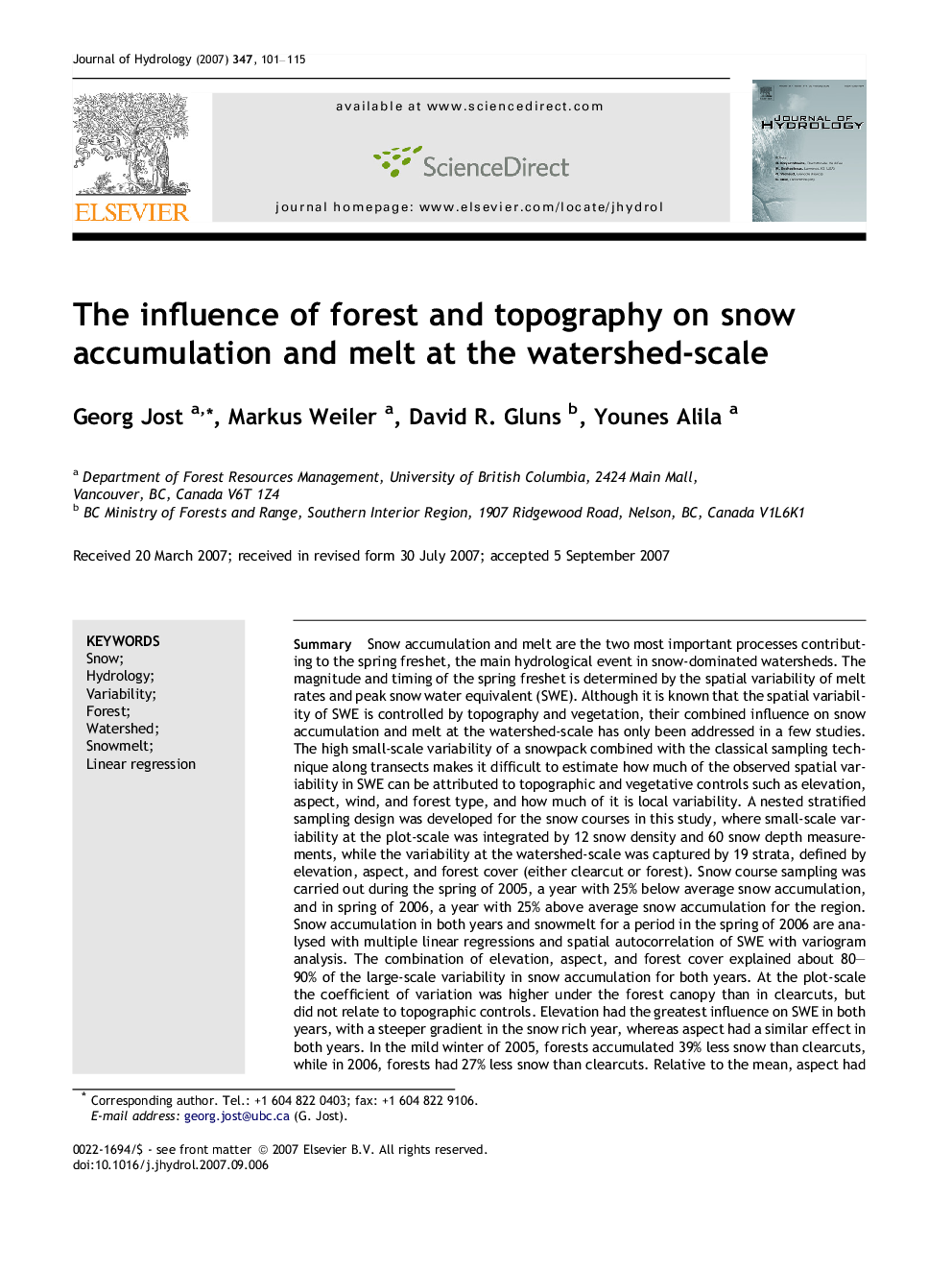| کد مقاله | کد نشریه | سال انتشار | مقاله انگلیسی | نسخه تمام متن |
|---|---|---|---|---|
| 4579647 | 1630122 | 2007 | 15 صفحه PDF | دانلود رایگان |

SummarySnow accumulation and melt are the two most important processes contributing to the spring freshet, the main hydrological event in snow-dominated watersheds. The magnitude and timing of the spring freshet is determined by the spatial variability of melt rates and peak snow water equivalent (SWE). Although it is known that the spatial variability of SWE is controlled by topography and vegetation, their combined influence on snow accumulation and melt at the watershed-scale has only been addressed in a few studies. The high small-scale variability of a snowpack combined with the classical sampling technique along transects makes it difficult to estimate how much of the observed spatial variability in SWE can be attributed to topographic and vegetative controls such as elevation, aspect, wind, and forest type, and how much of it is local variability. A nested stratified sampling design was developed for the snow courses in this study, where small-scale variability at the plot-scale was integrated by 12 snow density and 60 snow depth measurements, while the variability at the watershed-scale was captured by 19 strata, defined by elevation, aspect, and forest cover (either clearcut or forest). Snow course sampling was carried out during the spring of 2005, a year with 25% below average snow accumulation, and in spring of 2006, a year with 25% above average snow accumulation for the region. Snow accumulation in both years and snowmelt for a period in the spring of 2006 are analysed with multiple linear regressions and spatial autocorrelation of SWE with variogram analysis. The combination of elevation, aspect, and forest cover explained about 80–90% of the large-scale variability in snow accumulation for both years. At the plot-scale the coefficient of variation was higher under the forest canopy than in clearcuts, but did not relate to topographic controls. Elevation had the greatest influence on SWE in both years, with a steeper gradient in the snow rich year, whereas aspect had a similar effect in both years. In the mild winter of 2005, forests accumulated 39% less snow than clearcuts, while in 2006, forests had 27% less snow than clearcuts. Relative to the mean, aspect had a greater influence on snow accumulation than forest cover in the mild winter of 2005. Elevation played the most important role in snowmelt, while both aspect and forest cover had a comparable effect with slightly less influence than elevation. Almost all variograms show a clear sill, confirming that in the majority of cases, a 60 × 60 m plot size was adequate in capturing the variability of the plot-scale. In general, the degree of spatial autocorrelations is persistent in the snowmelt season for both years. This study has shown that it is possible to separate large-scale variability created by topography and forest cover from plot-scale variability through specifically designed snow surveys. The methods and data set of this study are useful in testing spatially-distributed snowmelt models and in developing new algorithms that reflect the relationships between the factors controlling the spatial variability of SWE.
Journal: Journal of Hydrology - Volume 347, Issues 1–2, 15 December 2007, Pages 101–115